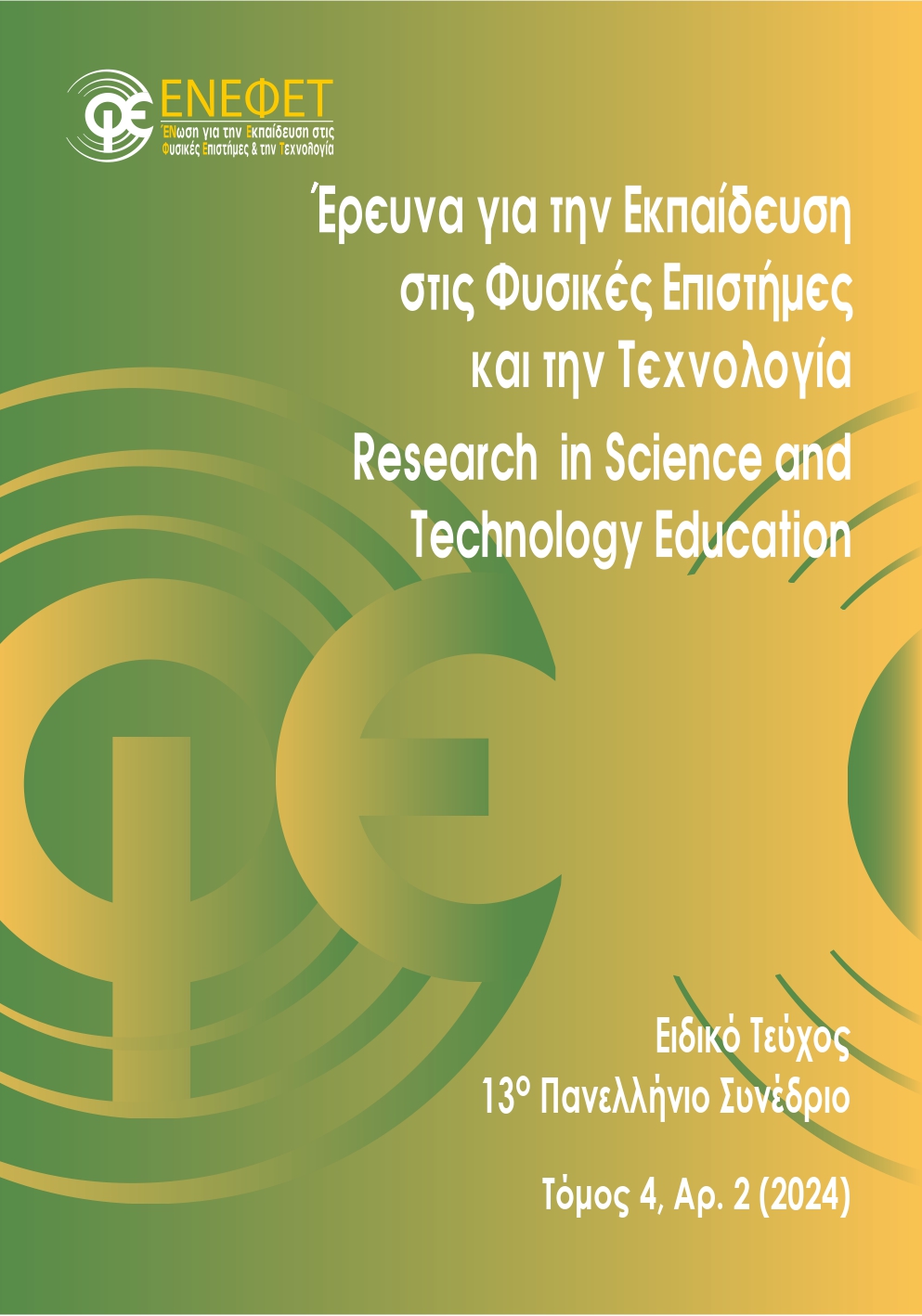Οι Μικροοργανισμοί στα Βιβλία Βιολογίας Γυμνασίου της Κύπρου

Περίληψη
Μια ολοκληρωμένη εικόνα των μικροοργανισμών είναι σημαντική για να αντιληφθούν οι μαθητές/τριες τη σημασία τους στα βιολογικά συστήματα και τον επεκτεινόμενο ρόλο τους στη βιομηχανία και την τεχνολογία. Ωστόσο, η έρευνα δείχνει ότι πολλοί/ές μαθητές/τριες εκφράζουν εναλλακτικές ιδέες για πτυχές όπως η μορφολογία και το μέγεθός τους, και τους αντιλαμβάνονται αποκλειστικά ως βλαβερούς για τους άλλους οργανισμούς. Λαμβάνοντας υπόψη πως τα σχετικά σχολικά βιβλία καθορίζουν σε μεγάλο βαθμό τη διδασκαλία και μάθηση των φυσικών επιστημών στην τάξη, εξετάσαμε τα σχολικά βιβλία βιολογίας γυμνασίου της Κύπρου. Οι παράγραφοι στις οποίες αναφέρονται μικροοργανισμοί (138) κωδικοποιήθηκαν από τους δύο συγγραφείς σε αμοιβαία αποκλειόμενες κατηγορίες με ικανοποιητική συμφωνία μεταξύ τους. Τα αποτελέσματα της ανάλυσης έδειξαν ότι (α) στις περισσότερες περιπτώσεις οι μικροοργανισμοί αναφέρονται σε σχέση με την υγεία και (β) οι περιπτώσεις στις οποίες παρουσιάζονται με αρνητικό τρόπο υπερισχύουν των περιπτώσεων στις οποίες παρουσιάζονται με θετικό τρόπο. Συζητούνται σχετική βιβλιογραφία και πιθανές επιπτώσεις.
Λεπτομέρειες άρθρου
- Πώς να δημιουργήσετε Αναφορές
-
Αμπατζίδης Γ., & Κορφιάτης Κ. (2024). Οι Μικροοργανισμοί στα Βιβλία Βιολογίας Γυμνασίου της Κύπρου. Έρευνα για την Εκπαίδευση στις Φυσικές Επιστήμες και την Τεχνολογία, 4(2), 1–14. https://doi.org/10.12681/riste.37677
- Ενότητα
- Άρθρο Ερευνητικό
Οι συγγραφείς διατηρούν τα πνευματικά δικαιώματα και παρέχουν στο περιοδικό το δικαίωμα της πρώτης δημοσίευσης μαζί με την αδειοδότηση της εργασίας με CC-BY-NC-SA, που επιτρέπει σε άλλους να μοιράζονται αυτή την εργασία με αναγνώριση του συγγραφικού δικαιώματος και την αρχική δημοσίευση σε αυτό το περιοδικό.


